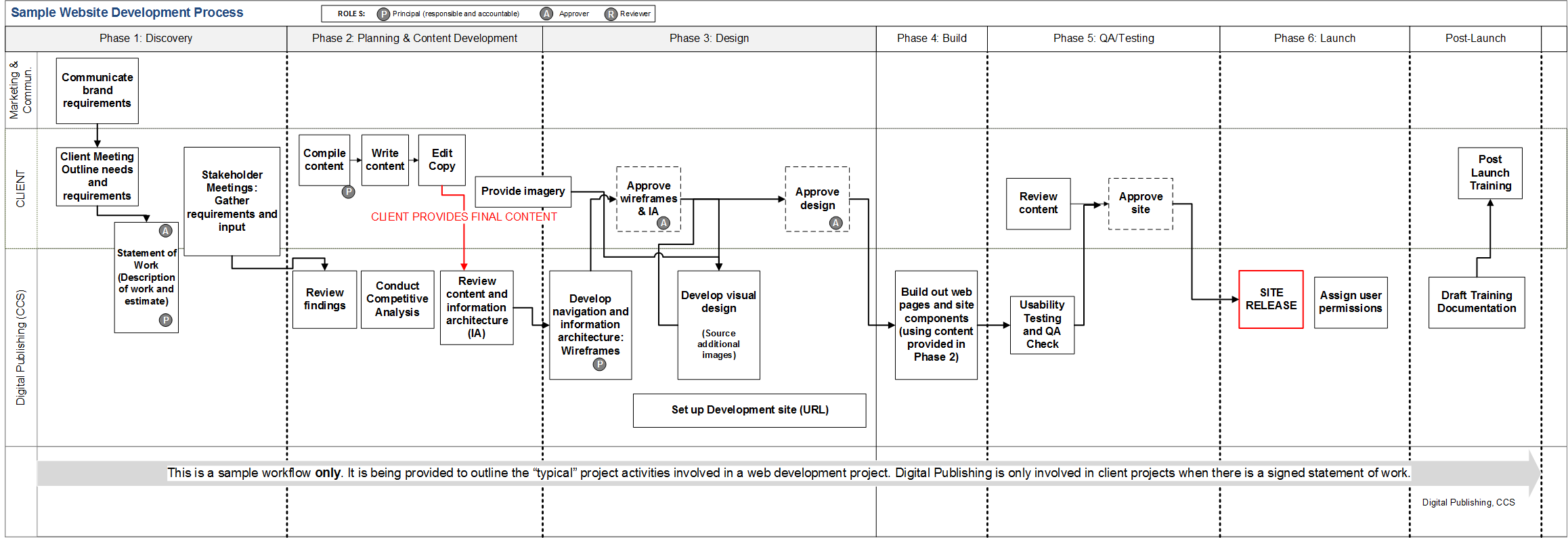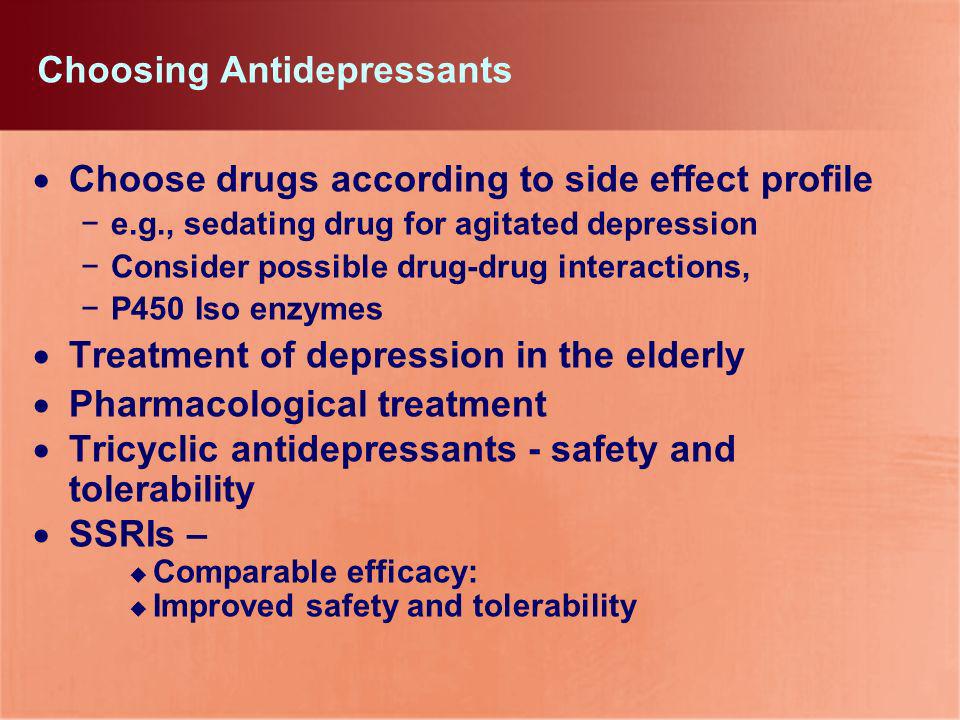The Comprehensive Guide to Sedating Effects: Examples, Uses, and Potential Risks
What are the different types of sedatives? How do they work? What are the potential risks and side effects of using sedatives? Explore the comprehensive overview of sedating effects, their clinical uses, and alternative options.
Sedatives: An Overview
Sedatives, also known as central nervous system (CNS) depressants, are a group of drugs that slow down brain activity. These medications are commonly used to help individuals feel more relaxed, calm, and improve sleep quality. Doctors often prescribe sedatives to treat a variety of conditions, including anxiety disorders, sleep disorders, seizures, tension, panic disorders, and alcohol withdrawal syndrome.
Types of Sedatives
There are several different types of sedatives that are commonly used, including:
Barbiturates
Barbiturates are a class of sedatives that help relieve anxiety and treat seizures. Examples of barbiturates include phenobarbital (Luminal), amobarbital (Amytal Sodium), butalbital (Fiorinal), and pentobarbital (Nembutal).

Benzodiazepines
Benzodiazepines are used to treat various conditions, such as panic attacks, insomnia, seizures, depression, and painful muscle spasms. Examples of benzodiazepines include diazepam (Valium), alprazolam (Xanax), clonazepam (Klonopin), and lorazepam (Ativan).
Hypnotics
Also known as nonbenzodiazepine sleep medications or Z-drugs, hypnotics are similar to benzodiazepines but typically cause fewer side effects. Doctors often prescribe hypnotics to treat sleep disorders. Examples of hypnotics include zolpidem (Ambien), eszopiclone (Lunesta), and zaleplon (Sonata).
First-Generation Antihistamines
Some antihistamines, such as diphenhydramine (Benadryl), dimenhydrinate (Dramamine), and brompheniramine (Dimetapp), have sedating properties and can be useful in treating mild sleep problems.
Other Sedating Medications
In addition to the above-mentioned sedatives, there are other prescription medications that can slow down brain activity and have sedating effects, including opioids, alcohol, general anesthetics, muscle relaxants, antidepressants, and antipsychotics.

How Sedatives Work
Sedatives work by increasing the activity of the brain chemical gamma-aminobutyric acid (GABA). GABA is an inhibitory neurotransmitter, meaning it slows down brain activity. By enhancing the effects of GABA, sedatives can cause a person to become more relaxed, drowsy, and calm.
Potential Side Effects and Risks
While sedatives have intended clinical effects, they may also cause some unwanted short-term side effects, such as difficulties with focus and concentration, memory loss, slow reaction times, impaired depth and distance perception, an inability to feel pain, confusion, impaired judgment, slurred speech, and low blood pressure.
The long-term use of sedatives may also lead to more serious side effects, including anxiety, chronic fatigue, weight gain, depression, and thoughts of suicide.
It is important to note that the use of cannabis can dampen the effects of sedatives, and people taking sedatives who plan to become pregnant should talk to their doctor, as the use of antianxiety medications during early pregnancy may increase the risk of preeclampsia, preterm birth, and low birth weight.

Alternatives to Sedatives
For individuals seeking alternatives to sedatives, there are several options available, including:
- Cognitive-behavioral therapy (CBT) for the treatment of insomnia and anxiety disorders
- Relaxation techniques, such as meditation, deep breathing, and yoga
- Improved sleep hygiene, including establishing a consistent sleep schedule and creating a comfortable sleep environment
- Exercise and physical activity to promote better sleep and reduce stress
- Herbal supplements, such as melatonin or valerian root, which may have mild sedative effects
Conclusion
Sedatives are a class of medications that can be useful in the treatment of various conditions, such as anxiety, sleep disorders, and seizures. However, it is important to be aware of the potential risks and side effects associated with the use of these drugs. Healthcare providers can work with patients to determine the most appropriate treatment plan, which may include alternative options or a cautious approach to sedative use.

Examples, uses, effects, and more
Sedatives, or central nervous system depressants, are a group of drugs that slow brain activity. People use these drugs to help them calm down, feel more relaxed, and get better sleep.
There has been a recent increase in sedative prescriptions. Doctors prescribe sedatives to treat conditions such as:
- anxiety disorders
- sleep disorders
- seizures
- tension
- panic disorders
- alcohol withdrawal syndrome
Sedatives are drugs that people commonly misuse. Misusing sedatives and prolonging their use may lead to dependency and eventual withdrawal symptoms.
This article examines the different types of sedatives available and their possible uses. It also looks at the potential risks associated with using them and some alternative options.
Sedatives have numerous clinical uses. For example, they can induce sedation before surgical procedures, and this can range from mild sedation to general anesthesia.
Doctors also give sedatives and analgesics to individuals to reduce anxiety and provide pain relief before and after procedures.
Obstetric anesthesiologists may also give sedatives to people experiencing distress or restlessness during labor.
Because of their ability to relieve physical stress and anxiety and promote relaxation, doctors may also prescribe sedatives to people with insomnia, anxiety disorders, and muscle spasms.
People with bipolar disorder, post-traumatic stress disorder, and seizures may also benefit from prescription sedatives.
The following is a list of sedatives that people commonly use.
Barbiturates
Barbiturates help relieve anxiety and treat seizures.
Examples of barbiturates include:
- phenobarbital (Luminal)
- amobarbital (Amytal Sodium)
- butalbital (Fiorinal)
- pentobarbital (Nembutal)
Benzodiazepines
Benzodiazepines treat various conditions, including:
- panic attacks
- insomnia
- seizures
- depression
- painful muscle spasms
Examples of benzodiazepines include:
- diazepam (Valium)
- alprazolam (Xanax)
- clonazepam (Klonopin)
- lorazepam (Ativan)
Hypnotics
Also known as nonbenzodiazepine sleep medications or Z-drugs, hypnotics are similar to benzodiazepines but cause fewer side effects. Doctors typically use hypnotics to treat sleep disorders.
Doctors typically use hypnotics to treat sleep disorders.
Examples of hypnotics include:
- zolpidem (Ambien)
- eszopiclone (Lunesta)
- zaleplon (Sonata)
First generation antihistamines
Some antihistamines have sedating properties and are useful in treating mild sleep problems.
Antihistamines are available over the counter and include:
- diphenhydramine (Benadryl)
- dimenhydrinate (Dramamine)
- brompheniramine (Dimetapp)
Others
Other medications slow brain activity and have sedating effects using different mechanisms than those that sedatives utilize. These include:
- opioids
- alcohol
- general anesthetics
- muscle relaxants
- antidepressants
- antipsychotics
Some examples of these prescription medications include:
- oxycodone (OxyContin)
- morphine (Roxanol)
- baclofen (Lioresal)
- gamma-hydroxybutyrate (Xyrem)
- amitriptyline (Elavil)
- olanzapine (Zyprexa)
Sedatives act by increasing the activity of the brain chemical gamma-aminobutyric acid (GABA). This can slow down brain activity in general.
This can slow down brain activity in general.
The inhibition of brain activity causes a person to become more relaxed, drowsy, and calm. Sedatives also allow GABA to have a stronger inhibitory effect on the brain.
Although sedatives have intended clinical effects, they may also cause some unwanted short-term side effects, including:
- difficulties with focus and concentration
- memory loss
- slow reaction times
- impaired depth and distance perception
- an inability to feel pain
- confusion
- impaired judgment
- slurred speech
- low blood pressure
The long-term use of sedatives may cause:
- anxiety
- chronic fatigue
- weight gain
- depression
- thoughts of suicide
Suicide prevention
If you know someone at immediate risk of self-harm, suicide, or hurting another person:
- Ask the tough question: “Are you considering suicide?”
- Listen to the person without judgment.

- Call 911 or the local emergency number, or text TALK to 741741 to communicate with a trained crisis counselor.
- Stay with the person until professional help arrives.
- Try to remove any weapons, medications, or other potentially harmful objects.
If you or someone you know is having thoughts of suicide, a prevention hotline can help. The 988 Suicide and Crisis Lifeline is available 24 hours a day at 988. During a crisis, people who are hard of hearing can use their preferred relay service or dial 711 then 988.
Click here for more links and local resources.
Was this helpful?
People taking sedatives need to be cautious when using cannabis since the drug can dampen the effects of sedatives. One 2019 study suggests that people who use cannabis regularly require higher doses of sedatives.
People taking sedatives who plan to become pregnant should talk with a doctor. Another 2019 study indicates that the use of antianxiety medications during early pregnancy increases the risk of preeclampsia and may also lead to preterm birth and a low birth weight.
Misusing sedatives, which means taking them in amounts or ways other than what the doctor prescribed, can have detrimental effects for a person, including overdose.
Combining sedatives with other depressants can cause a combined and much more significant effect. In 2018, 899 people ages 15–24 years died from overusing prescription drugs, according to the National Institute on Drug Abuse. The majority of these deaths occurred as a result of taking benzodiazepines with opioid medications.
One 2017 study suggests that people taking both opioids and benzodiazepines have a higher risk of opioid overdose and emergency room admissions. A similar study suggests that people taking both types of drugs have a 10-fold risk of dying from an overdose compared with those who only take opioids.
Alcohol is another potent depressant that may interact with and increase the effects of sedatives, causing increased sedation and more significant impairment. The effects could slow down or even stop a person’s breathing and heart function.
Some other potential consequences of misuse include:
- impaired function while engaging in activities such as driving
- unconsciousness
- death
Long-term sedative use can also cause dependence. It is important to note that dependence does not only happen in people who misuse sedatives. It also affects people who take them exactly as the doctor prescribed.
Because their body has become used to the sedative’s effects, a person may also develop a tolerance to the drug or get a reduced effect from it. As a result, they may need higher doses to achieve the same initial effect.
If someone develops a dependence on a drug, they may experience withdrawal if they stop taking it.
People who suddenly stop taking sedatives may experience withdrawal symptoms. These can happen rapidly, be severe, and even be life threatening. Withdrawal symptoms may appear as early as 12–24 hours after the person’s last dose.
Withdrawal symptoms may include:
- irritability
- hallucinations
- difficulty sleeping
- rapid heart rate
- shaky hands and unintended movements
- profuse sweating
- nausea and vomiting
People who worry about becoming dependent on sedatives can try other options to manage their condition, such as:
- Lifestyle changes: Proper nutrition, regular exercise, and good sleep hygiene may help decrease anxiety, improve overall health and well-being, and enhance sleep.

- Cognitive behavioral therapy (CBT): One 2020 study suggests that CBT and yoga are both effective in managing late-life worry in older adults. They were also effective in improving the sleep of shift workers.
- Yoga: Yoga and meditation may promote relaxation, reduce stress and anxiety, and improve sleep. In one study, doing prenatal yoga during pregnancy reduced anxiety and improved sleep.
- Relaxation techniques: Deep breathing, guided imagery, progressive muscle relaxation, and other relaxation techniques may help people cope with anxiety and stress.
- Aromatherapy: A person can use essential oils such as lavender and chamomile to help them sleep and relax.
- Supplements: Several supplements — including valerian root, melatonin, passionflower, and magnesium — may help improve sleep. A 2021 study suggests that taking magnesium may improve sleep duration and quality.
People use sedatives for a variety of clinical purposes. However, these drugs are prone to misuse and may cause severe side effects.
However, these drugs are prone to misuse and may cause severe side effects.
People taking sedatives must communicate with a doctor to prevent adverse side effects, including dependence and withdrawal. People who are planning to take sedatives should first ask a doctor for possible alternatives.
Examples, uses, effects, and more
Sedatives, or central nervous system depressants, are a group of drugs that slow brain activity. People use these drugs to help them calm down, feel more relaxed, and get better sleep.
There has been a recent increase in sedative prescriptions. Doctors prescribe sedatives to treat conditions such as:
- anxiety disorders
- sleep disorders
- seizures
- tension
- panic disorders
- alcohol withdrawal syndrome
Sedatives are drugs that people commonly misuse. Misusing sedatives and prolonging their use may lead to dependency and eventual withdrawal symptoms.
This article examines the different types of sedatives available and their possible uses. It also looks at the potential risks associated with using them and some alternative options.
It also looks at the potential risks associated with using them and some alternative options.
Sedatives have numerous clinical uses. For example, they can induce sedation before surgical procedures, and this can range from mild sedation to general anesthesia.
Doctors also give sedatives and analgesics to individuals to reduce anxiety and provide pain relief before and after procedures.
Obstetric anesthesiologists may also give sedatives to people experiencing distress or restlessness during labor.
Because of their ability to relieve physical stress and anxiety and promote relaxation, doctors may also prescribe sedatives to people with insomnia, anxiety disorders, and muscle spasms.
People with bipolar disorder, post-traumatic stress disorder, and seizures may also benefit from prescription sedatives.
The following is a list of sedatives that people commonly use.
Barbiturates
Barbiturates help relieve anxiety and treat seizures.
Examples of barbiturates include:
- phenobarbital (Luminal)
- amobarbital (Amytal Sodium)
- butalbital (Fiorinal)
- pentobarbital (Nembutal)
Benzodiazepines
Benzodiazepines treat various conditions, including:
- panic attacks
- insomnia
- seizures
- depression
- painful muscle spasms
Examples of benzodiazepines include:
- diazepam (Valium)
- alprazolam (Xanax)
- clonazepam (Klonopin)
- lorazepam (Ativan)
Hypnotics
Also known as nonbenzodiazepine sleep medications or Z-drugs, hypnotics are similar to benzodiazepines but cause fewer side effects. Doctors typically use hypnotics to treat sleep disorders.
Doctors typically use hypnotics to treat sleep disorders.
Examples of hypnotics include:
- zolpidem (Ambien)
- eszopiclone (Lunesta)
- zaleplon (Sonata)
First generation antihistamines
Some antihistamines have sedating properties and are useful in treating mild sleep problems.
Antihistamines are available over the counter and include:
- diphenhydramine (Benadryl)
- dimenhydrinate (Dramamine)
- brompheniramine (Dimetapp)
Others
Other medications slow brain activity and have sedating effects using different mechanisms than those that sedatives utilize. These include:
- opioids
- alcohol
- general anesthetics
- muscle relaxants
- antidepressants
- antipsychotics
Some examples of these prescription medications include:
- oxycodone (OxyContin)
- morphine (Roxanol)
- baclofen (Lioresal)
- gamma-hydroxybutyrate (Xyrem)
- amitriptyline (Elavil)
- olanzapine (Zyprexa)
Sedatives act by increasing the activity of the brain chemical gamma-aminobutyric acid (GABA). This can slow down brain activity in general.
This can slow down brain activity in general.
The inhibition of brain activity causes a person to become more relaxed, drowsy, and calm. Sedatives also allow GABA to have a stronger inhibitory effect on the brain.
Although sedatives have intended clinical effects, they may also cause some unwanted short-term side effects, including:
- difficulties with focus and concentration
- memory loss
- slow reaction times
- impaired depth and distance perception
- an inability to feel pain
- confusion
- impaired judgment
- slurred speech
- low blood pressure
The long-term use of sedatives may cause:
- anxiety
- chronic fatigue
- weight gain
- depression
- thoughts of suicide
Suicide prevention
If you know someone at immediate risk of self-harm, suicide, or hurting another person:
- Ask the tough question: “Are you considering suicide?”
- Listen to the person without judgment.

- Call 911 or the local emergency number, or text TALK to 741741 to communicate with a trained crisis counselor.
- Stay with the person until professional help arrives.
- Try to remove any weapons, medications, or other potentially harmful objects.
If you or someone you know is having thoughts of suicide, a prevention hotline can help. The 988 Suicide and Crisis Lifeline is available 24 hours a day at 988. During a crisis, people who are hard of hearing can use their preferred relay service or dial 711 then 988.
Click here for more links and local resources.
Was this helpful?
People taking sedatives need to be cautious when using cannabis since the drug can dampen the effects of sedatives. One 2019 study suggests that people who use cannabis regularly require higher doses of sedatives.
People taking sedatives who plan to become pregnant should talk with a doctor. Another 2019 study indicates that the use of antianxiety medications during early pregnancy increases the risk of preeclampsia and may also lead to preterm birth and a low birth weight.
Misusing sedatives, which means taking them in amounts or ways other than what the doctor prescribed, can have detrimental effects for a person, including overdose.
Combining sedatives with other depressants can cause a combined and much more significant effect. In 2018, 899 people ages 15–24 years died from overusing prescription drugs, according to the National Institute on Drug Abuse. The majority of these deaths occurred as a result of taking benzodiazepines with opioid medications.
One 2017 study suggests that people taking both opioids and benzodiazepines have a higher risk of opioid overdose and emergency room admissions. A similar study suggests that people taking both types of drugs have a 10-fold risk of dying from an overdose compared with those who only take opioids.
Alcohol is another potent depressant that may interact with and increase the effects of sedatives, causing increased sedation and more significant impairment. The effects could slow down or even stop a person’s breathing and heart function.
Some other potential consequences of misuse include:
- impaired function while engaging in activities such as driving
- unconsciousness
- death
Long-term sedative use can also cause dependence. It is important to note that dependence does not only happen in people who misuse sedatives. It also affects people who take them exactly as the doctor prescribed.
Because their body has become used to the sedative’s effects, a person may also develop a tolerance to the drug or get a reduced effect from it. As a result, they may need higher doses to achieve the same initial effect.
If someone develops a dependence on a drug, they may experience withdrawal if they stop taking it.
People who suddenly stop taking sedatives may experience withdrawal symptoms. These can happen rapidly, be severe, and even be life threatening. Withdrawal symptoms may appear as early as 12–24 hours after the person’s last dose.
Withdrawal symptoms may include:
- irritability
- hallucinations
- difficulty sleeping
- rapid heart rate
- shaky hands and unintended movements
- profuse sweating
- nausea and vomiting
People who worry about becoming dependent on sedatives can try other options to manage their condition, such as:
- Lifestyle changes: Proper nutrition, regular exercise, and good sleep hygiene may help decrease anxiety, improve overall health and well-being, and enhance sleep.

- Cognitive behavioral therapy (CBT): One 2020 study suggests that CBT and yoga are both effective in managing late-life worry in older adults. They were also effective in improving the sleep of shift workers.
- Yoga: Yoga and meditation may promote relaxation, reduce stress and anxiety, and improve sleep. In one study, doing prenatal yoga during pregnancy reduced anxiety and improved sleep.
- Relaxation techniques: Deep breathing, guided imagery, progressive muscle relaxation, and other relaxation techniques may help people cope with anxiety and stress.
- Aromatherapy: A person can use essential oils such as lavender and chamomile to help them sleep and relax.
- Supplements: Several supplements — including valerian root, melatonin, passionflower, and magnesium — may help improve sleep. A 2021 study suggests that taking magnesium may improve sleep duration and quality.
People use sedatives for a variety of clinical purposes. However, these drugs are prone to misuse and may cause severe side effects.
However, these drugs are prone to misuse and may cause severe side effects.
People taking sedatives must communicate with a doctor to prevent adverse side effects, including dependence and withdrawal. People who are planning to take sedatives should first ask a doctor for possible alternatives.
Histamine h2 receptor genotyping (rs901865) may predict the sedative effect of desloratidine in chronic spontaneous urticaria
Industry news
August 16, 2019
Allergodermatology
Non-sedating h2 antihistamines such as desloratadine are the first line of treatment in patients with chronic spontaneous urticaria (CSU). However, desloratadine causes varying degrees of sedative side effects in patients with CSU, and there are currently no biomarkers to predict the severity of this side effect. The authors of this work set themselves the goal of studying the relationship between the rs9 polymorphism01865 of the histamine receptor type 1 (HRh2) gene and the severity of the sedative side effect after desloratadine therapy in patients with CRS.
The investigators found that 20 out of 114 patients (17.50%) experienced a sedative side effect after treatment with desloratadine and 3 patients (2.63%) experienced severe drowsiness. The frequency of the rs901865 HRh2 G allele was significantly higher in patients who experienced sedation than in those with the A rs901865 allele (p = 0.0009). In addition, in patients with homozygous G/G rs9 genotype01865 had a more severe sedative side effect than in patients with the heterozygous G/A rs901865 genotype (p = 0.005). These results suggest that the HRh2 rs901865 G/G polymorphism is associated with severe sedative side effects after treatment with desloratadine.
Therefore, the detection of rs901865 HRh2 polymorphic variants could potentially be used as a biomarker to predict the severity of sedative side effects in patients treated with desloratadine.
Source: Pharmacogenomics J. 2019 Aug 13. doi: 10.1038/s41397-019-0094-0.
Rate the publication
Related news
Industry news
Successful treatment of children with steroid-resistant eosinophilic colitis with montelukast on pathology, they are characterized by eosinophilic inflammation in the intestinal tract.

Industry news
Vaccination of children and allergies: a systematic review and meta-analysis There is a hypothesis that the vaccination of children may increase the risk of allergic diseases. The authors have taken a look at all available literature about the relationship between child vaccination and allergy.
Industry news
Kholodov’s anaphylaxis. Clinical depression
Cold anaphylaxis is an important form of hypersensitivity reaction to low temperatures. Such reactions include a wide range of manifestations, which vary from local symptoms to a systemic reaction.
More news
Sedatives and tonics
Recently, mass studies have noted an increase in the level of psychopathological disorders. The current situation is exacerbated by various socio-psychological and biological factors (socio-economic problems, global information overload, chronic fatigue, environmental situation, etc.). This leads to increased fatigue of the body, decreased performance, the appearance of irritability, tension, anxiety, decreased mood, sleep disturbances, etc.
The current situation is exacerbated by various socio-psychological and biological factors (socio-economic problems, global information overload, chronic fatigue, environmental situation, etc.). This leads to increased fatigue of the body, decreased performance, the appearance of irritability, tension, anxiety, decreased mood, sleep disturbances, etc.
In the treatment of neurotic conditions, the use of herbal sedatives, characterized by ease of dosing, a minimum of contraindications and side effects, is effective. Sedatives have a general calming effect on the central nervous system. The calming effect is manifested in a decrease in the reaction to various external stimuli and a slight decrease in daily activity.
The drugs of this group regulate the functions of the central nervous system, enhancing the processes of inhibition or lowering the processes of excitation. As a rule, they facilitate the onset and deepen natural sleep, enhance the effect of hypnotics, analgesics and other drugs that depress the central nervous system./kratom-withdrawal-4586322-REDO-V1-a8619bc31575400cb2b54d87775caf3f.png)
Compared to tranquilizers, herbal sedatives have a less pronounced psychosedative effect, do not have hypnotic and muscle relaxant properties, and do not cause ataxia. With prolonged use of herbal sedatives, mental drug dependence does not develop.
Tonic preparations are effective for borderline disorders, weakening of the general functions of the body and severe overexertion. This group includes drugs of natural origin. Tonic drugs are most effective in borderline disorders, as a means of maintenance therapy. In addition to the nonspecific general tonic effect exerted on the central nervous system, these drugs improve endocrine regulation and metabolic processes, as well as increase the body’s adaptation to adverse factors. The general tonic effect is expressed in an increase in the tone of the body’s vital activity, accompanied by an increase in appetite, an increase in the tone of the hollow organs, and the secretion of the glands of the gastrointestinal tract. The drugs of this group are also characterized by a mildly pronounced psychostimulating effect, which manifests itself in improving performance. Tonic preparations are low toxic, well tolerated by patients, including the elderly.
Tonic preparations are low toxic, well tolerated by patients, including the elderly.
News
Announcement of the date until which proposals will be accepted to include issues on the agenda and to nominate candidates for election to elected bodies at the annual meeting of shareholders of JSC “Pharmaceutical factory of St. Petersburg”
read more →
Announcement on the date until which proposals will be accepted to include issues on the agenda and to nominate candidates for election to elected bodies at the annual meeting of shareholders of JSC “Pharmaceutical factory of St. Petersburg”
read more →
The State Duma will consider draft law
on the regulation of drug registration issues.
read more →
The List of Vital and Essential Drugs
for 2018 has been published.
read more →
Preferences for full-cycle drug manufacturers
are planned to be introduced in 2019.
read more →
The pharmaceutical industry support program
until 2030 will be developed in 2018.
read more →
Entrance for specialists
Registration will allow you to see the results of clinical trials and evaluate the benefits of our products.
| Forgot your password? | |
R&D
OJSC “Pharmaceutical Factory of St. Petersburg” is an enterprise that has chosen an innovative path of development. We are constantly working to improve our products.
Our team
We are a team of like-minded professionals united by common goals. High intelligence, knowledge, experience and well-coordinated teamwork allow us to successfully solve the most ambitious tasks.
Career with us
We are always glad to see in our team people who are creative, not indifferent, aimed at professional development and career growth.




